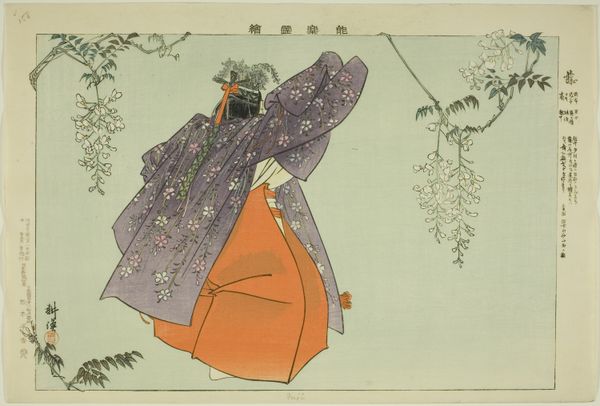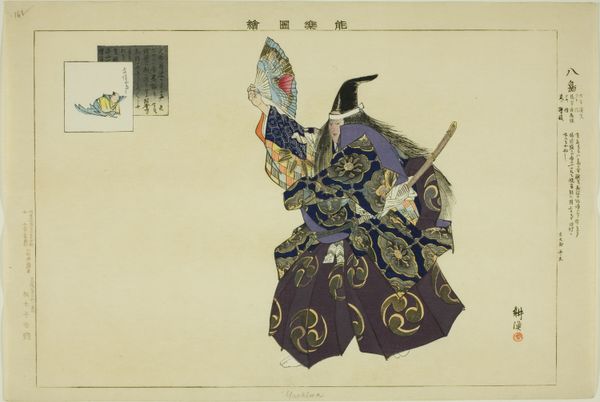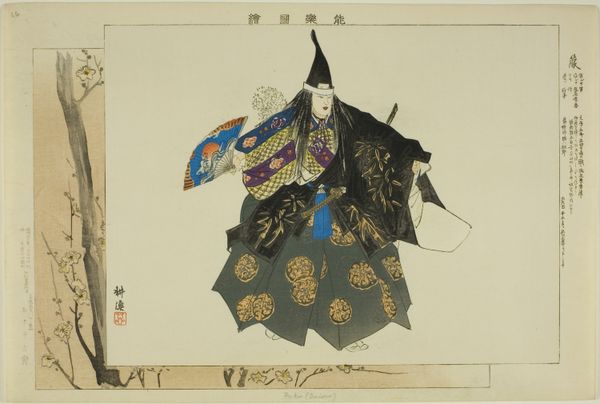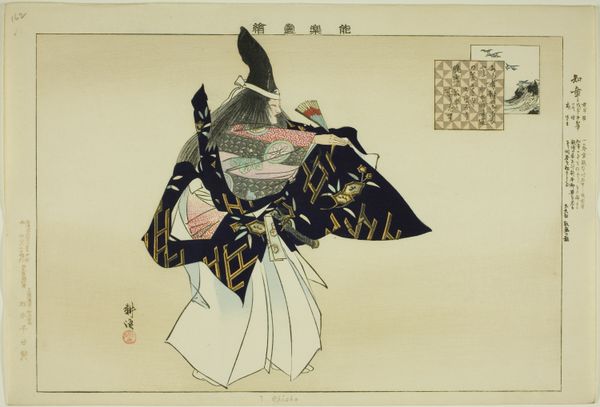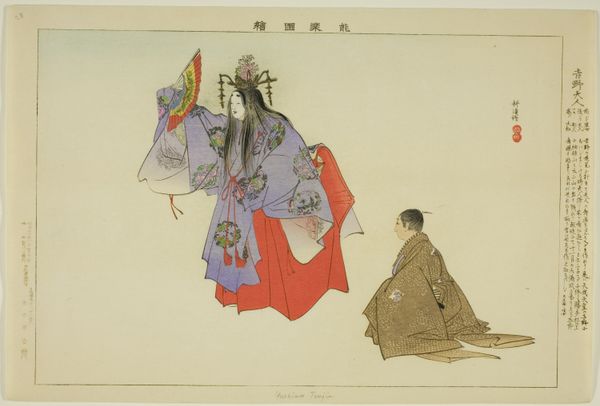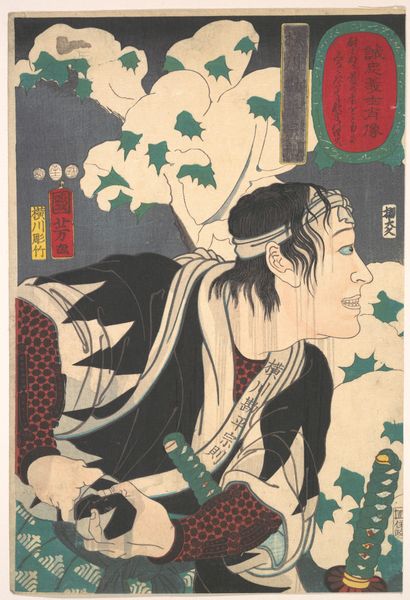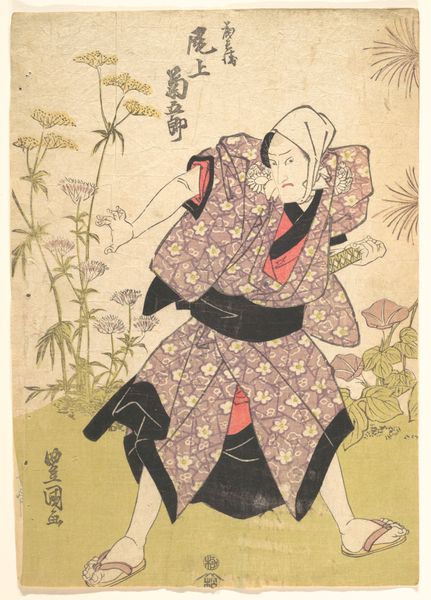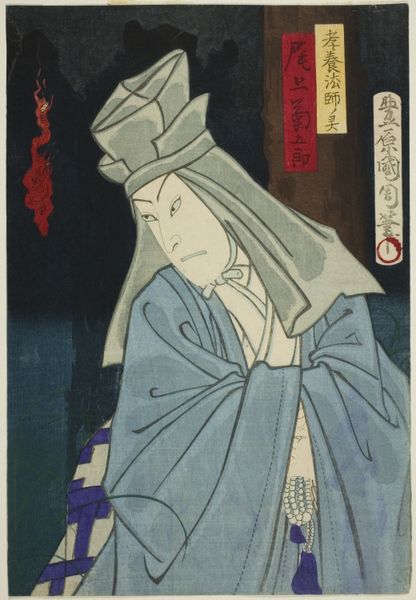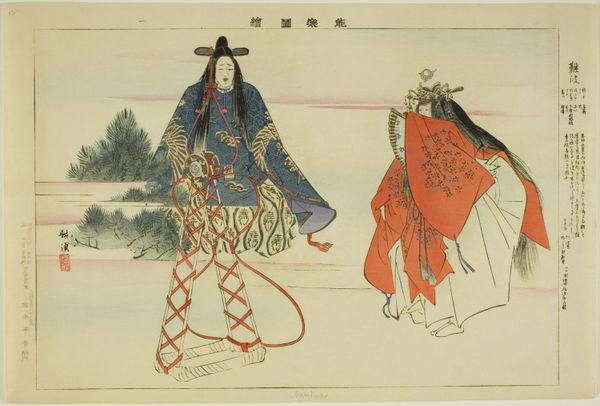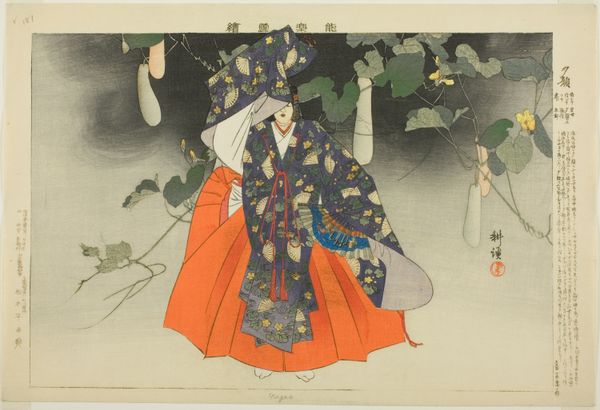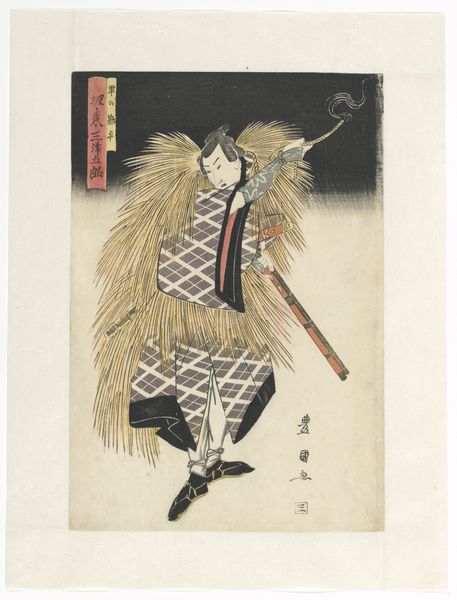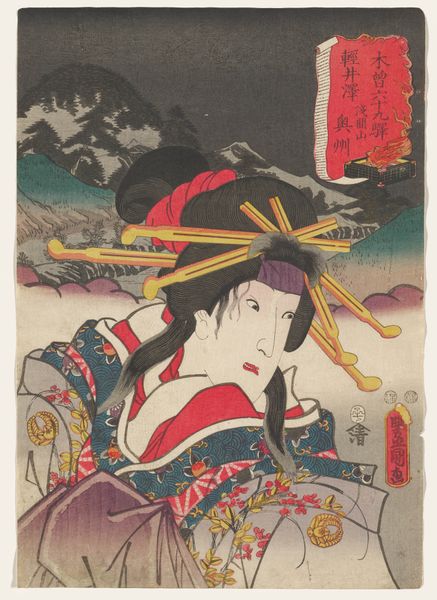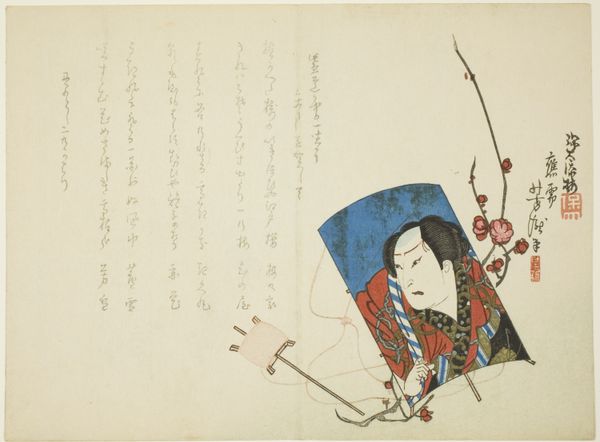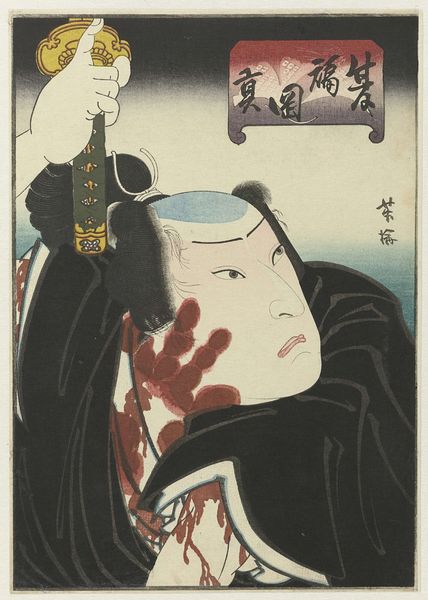
Dimensions: height 224 mm, width 322 mm
Copyright: Rijks Museum: Open Domain
Curator: Here we have Kajita Hanko's "Woman Walking in the Snow," a woodblock print likely created between 1900 and 1917. Editor: It's striking. The woman almost melts into the landscape; it gives a real sense of isolation and quiet. Curator: The choice of woodblock is significant here. It speaks to the popularity of ukiyo-e prints and the market for images depicting daily life and nature, which served a growing urban population seeking accessible art. Editor: Absolutely, you can feel the hand of the artist in the textures. The layering of colors, particularly in her robe – the plum color against that gold and pale blue – must have taken quite a bit of skill and time to align those blocks properly. It highlights the labor involved, countering the illusion of effortless beauty. Curator: Exactly, ukiyo-e production was very systematized. We need to remember the artisan workshops supporting the artist, and the publishers who dictated so much of the subject matter. Think of the demand, locally and even internationally, that fueled the creation of prints like this one, showing aspects of Japanese culture. Editor: It makes you consider her attire, too – how the different layers are constructed, the way it both constrains and adorns her. Garments of this quality and layering signal wealth and status. The materials alone suggest that there is the history of manufacture, and textile consumption involved in depicting this solitary scene. Curator: This artwork, now in the Rijksmuseum's collection, offers a peek into the circulation of images and artistic styles at the time. We see the blending of traditional Japanese themes with emerging impressionistic elements which are visible in the shading and soft depiction of the snowfall. Editor: I agree. There's something both timeless and utterly contemporary about her solitary walk and stance. It bridges this beautiful, artisanal practice, to our appreciation today, through a historical market of images. Curator: The social forces shaping artistic production are always worth examining. It provides another rich context for experiencing artworks. Editor: Indeed, considering process alongside presentation. A material approach truly changes how you engage with a piece.
Comments
No comments
Be the first to comment and join the conversation on the ultimate creative platform.
